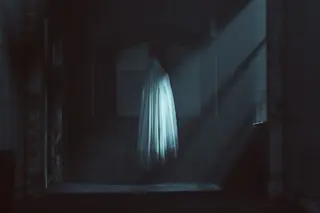Artificial sight moved a blink closer to reality recently, when scientists implanted an electronic retina into the eye of a man who had been blind for half a century. This marks a major milestone for researchers who have been pursuing the project for more than 15 years (see "Artificial Sight," Discover, August 2001). Mark Humayan, an ophthalmologist at the University of Southern California's Doheny Retina Institute, and his colleagues report that their 74-year-old patient is adapting well to his electric eye. An outside camera captures his surroundings, then radios the image to an array of 16 electrodes adjacent to retinal cells on the back of his eye. His brain is now learning to interpret the signals from those electrodes. So far, the patient can determine whether an object is in his field of view and can identify the location of someone in the room. "For someone who's been totally blind, ...
Follow Up:
Discover the breakthrough electronic retina implant bringing artificial sight closer to reality for blind patients. Learn more!
More on Discover
Stay Curious
SubscribeTo The Magazine
Save up to 40% off the cover price when you subscribe to Discover magazine.
Subscribe













